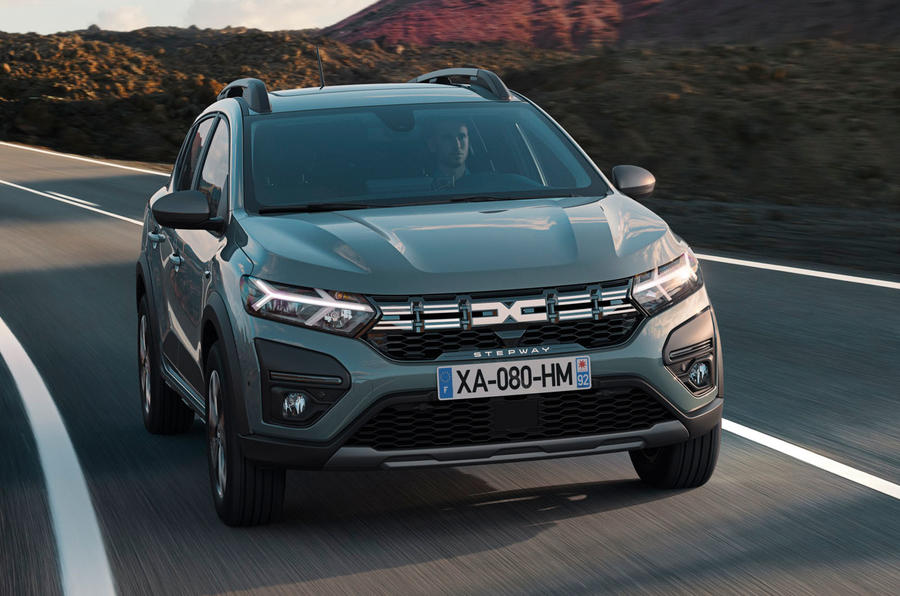Renault-owned budget brand Dacia will produce its first EV that won’t target long-range or rapid charging.
The next-generation Dacia Sandero will be the firm’s first full-size electric car, promising segment-leading affordability by shunning costly fast-charging, long-range battery hardware.
Dacia, Renault’s budget brand in Europe, is hoping to launch in Australia by 2025 and sell alongside Renault models on dealership floor.
Following the successful \launch of the Dacia Spring EV in 2021 (it has now sold some 120,000 units in Europe), the Romanian firm is shifting focus to the electrification of its existing core model lines, keeping costs low by using existing architecture and boosting efficiency by minimising kerb weight.
Dacia CEO Denis Le Vot said the new, fourth-generation Sandero will arrive in “2027 or 2028”, “live until 2034 or 2035” and serve as a flagbearer for the marque’s low-cost route to a zero-emissions line-up.
The Sandero is one of Europe’s cheapest and most popular cars, so the question of how to ensure its successor retains that positioning while complying with increasingly stringent safety and emissions legislations is a significant one.
Sales and marketing boss Xavier Martinet told Automotive Daily Network partner Autocar that while Dacia will push into the C-segment with three larger new models over the next three years, it won’t abandon the Sandero.
“The B-segment is who we are and what we do”, he said. “We don’t want to forget who we are.”
In order to maintain its position as a market leader in this segment, the Sandero will be electrified as sympathetically as possible.
Le Vot explained: “We will go for a shorter range and longer charge times” compared with electric rivals in the B-segment, because “we want a cheaper price for the customer”.
He pointed to the increasing entry price of mainstream electric cars – “€35,000, €40,000, €45,000” (AUD$55,000-$72,000) – as an inhibitor to widespread uptake and laid bare Dacia’s commitment to providing a more accessible alternative.
Once the new Duster is launched in 2024, every Dacia car (except the Spring) will be based on the Renault Group’s CMF-B platform, and its EVs will follow suit by moving onto the and closely related CMF-BEV electric equivalent.
This means the electric Sandero will effectively be Dacia’s take on the Renault 5, albeit with more of an overt focus on utility and practicality.
Minimising weight will be key to keeping costs down – and could even allow Dacia to fit a smaller battery than that due to be used by the Sandero’s platform-mates.
Le Vot mentioned that the average Spring customer drives some 10 miles (16km) per day – massively less than the 140-mile (225km) range offered by its 26.8kWh battery.
“If we did [the Spring] again, I would cut the battery in half,” he said, suggesting that learnings from Spring usage will inform Dacia’s next-generation EVs – although given its much larger footprint and longer-distance billing, the Sandero is unlikely to use a tiny battery.
Dacia won’t, he said, target a “500-600km range and 20-minute charging”. He added that the firm is investigating ways of making the battery chemistry as cheap as possible, too: “maybe the battery will be sodium-based. Some argue sodium batteries aren’t great because they don’t store a lot of energy and they’re heavy. But they’re cheap.”
Design boss David Durand gave clues as to how the next Sandero will fit into the brand’s new-look line-up – as previewed by the rugged, straight-edged Bigster SUV concept – and be substantially differentiated from the current car.
“The goal isn’t really off-road SUVs,” he said, denying that the rugged Duster and Bigster, as well as the brand’s new off-road-inspired Extreme trim, point to a shift towards a pure-SUV line-up.
“It’s more that you have a car that you can use in any condition, you’re not afraid to damage if you’re on a bad road, you have enough ground clearance to avoid having to say ‘I’m going to crush the bottom of my car, I can’t go there’ or ‘the branches are going to scratch the doors, I’m not going there’.”
Based on this outlook, it stands to reason the next Sandero will sit higher off the ground than the current one and be designed to more overtly showcase Dacia’s new active ethos, as showcased by the bare-bones, buggy-style Manifesto concept last year.
An ICE version remains possible, given that such cars can be sold until 2035 in Europe, but no doubt this will come with the hybrid technology that has been recently introduced in the Sandero-based Jogger MPV.




